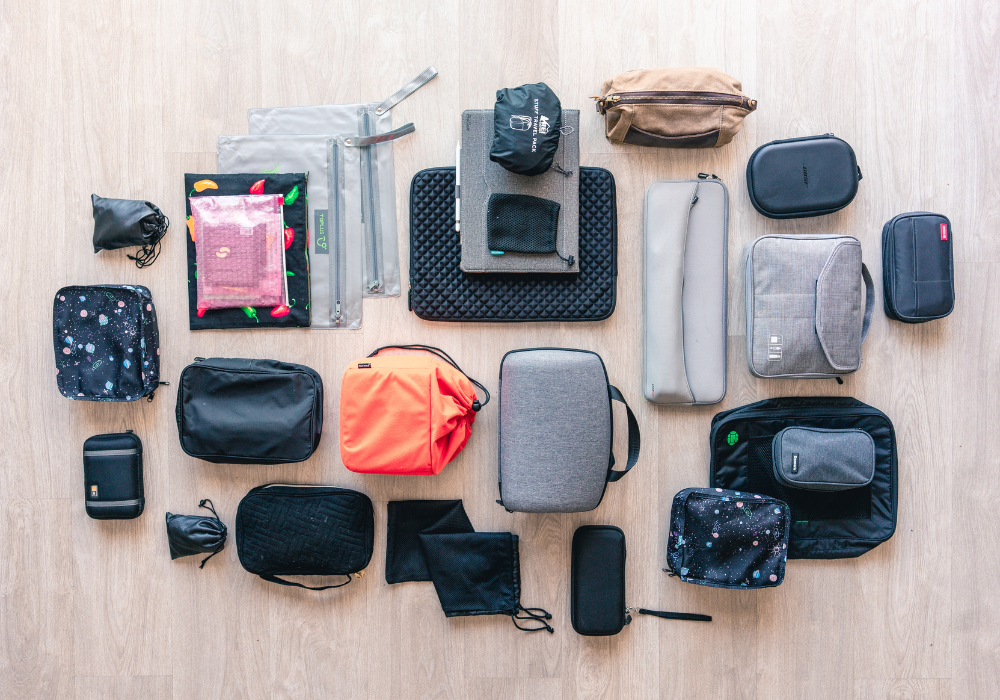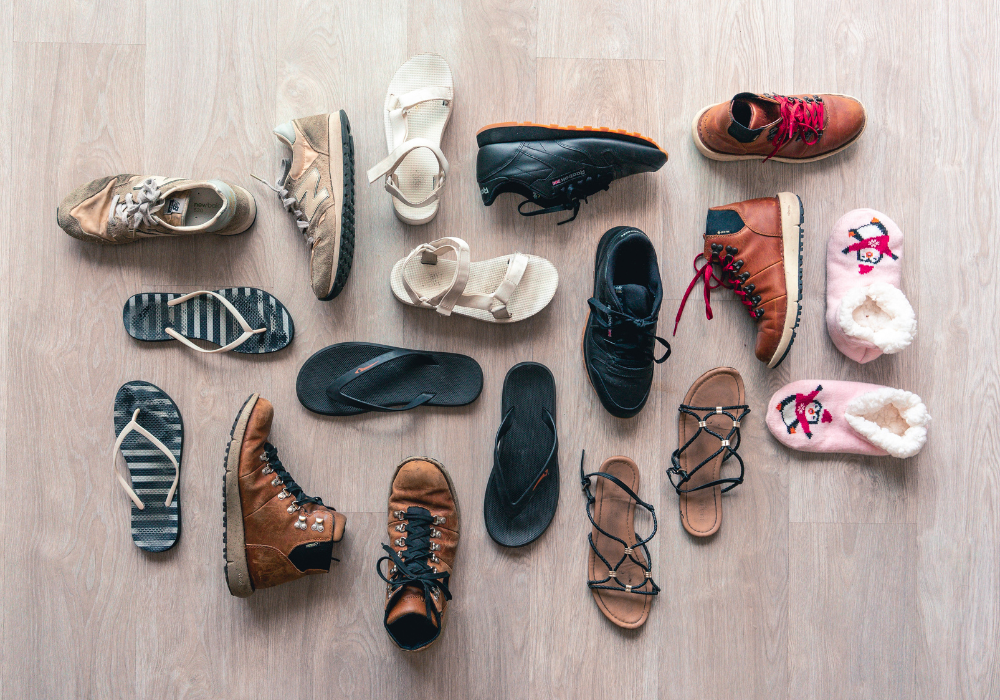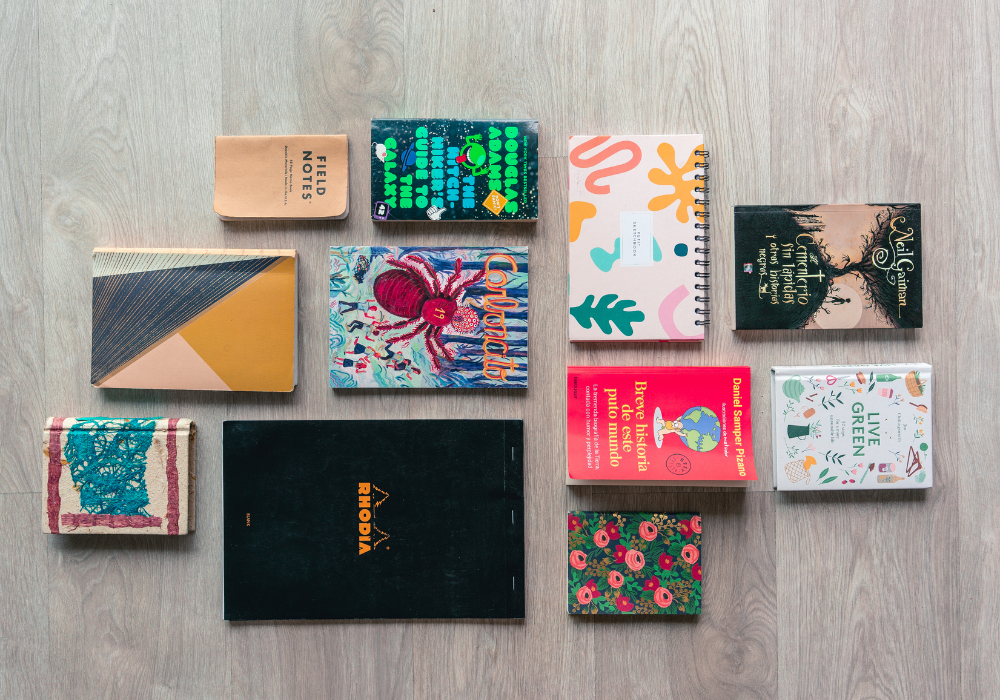The great Canadian
packing list
Your essentials for winter, spring, summer and fall in Canada
Planning a trip to Canada? Before you board your flight or pack up that van, keep in mind that Canada is vast with geography and weather patterns that are always changing. It’s hard to believe that in one country you can have six different time zones, people from so many cultures, coastlines, breathtaking mountains, vibrant cities, charming small towns, and metropolitan cities. On any given day (particularly during the shoulder seasons), the temperatures in the country might range from 20 °c to -20 °c.
That can make it *pretty* damn hard to pack if you’re not completely familiar with the area you’re going to. And even then, Canadians regularly wake up to freak snowstorms at random times or are duped by yet another fool’s spring! If you’re travelling in Canada, you might be in for anything from hot summer weather, ochre-coloured autumns, snowy winters or a rainy spring.
This is why it’s better to be prepared and not leave any necessary items behind. Packing smart is the key to a comfortable and enjoyable trip to Canada. On a trip to the Great White North, you’re probably not going to be packing super light.
Here’s your season-by-season packing checklist for Canada, including essential items for every traveller, whether you're hiking, hostelling, or just exploring our incredible coastlines and cities.
+ + +
General packing list: Essentials for all seasons
No matter when you’re planning to visit Canada, there are some essential items that should always be in your backpack. Staying in a hostel? Scroll down for bonus packing hacks!
- Passport, ID, driver’s license
- Travel insurance
- Portable battery
- International adapter (if you’re not from the Americas)
- Water bottle
- Packing cubes
- Headphones
- Microfiber towel
- Mini first aid kit
- Toiletries, supplements, and personal medication
And some very Canadian things to pack:
- National Park Discovery Pass: This pass gets you into over 80 national parks and historic sites across Canada (including Banff National Park!)
- Loonies and Toonies: Canada’s $1 and $2 coins: you'll need them for laundry, transit, and old-school vending machines.
- Milk bag cutter: Okay, you probably won't need one of these, but IYKYK.
Depending on which season you’re visiting, make sure to complement this general packing list with the following essentials for winter, spring, summer, or fall. 👇
Summer Packing List
Summers in Canada can be pretty hot, with temperatures reaching up to 35 °c during the sunniest hours. Ontario and Quebec can be hot and humid from June through to mid-September, whereas Alberta and B.C. can see more of a dry heat. However, nights can be significantly cooler (especially in northern or mountain regions), so you might need a light top layer at the ready. One of the biggest challenges of summer in Canada is dealing with bugs. Think black flies and mosquitoes that will feast on you if you’re next to lakes, rivers, or in the forest.
In a nutshell, if you’re visiting Canada in the summer, be ready for heat, sun, adventures, bugs, and outdoor elements.
Don’t forget these:
- Windbreaker or a rain jacket
- Sweater or hoodie
- Head lamp (for those bonfire nights and wilderness hostel experiences)
- Long pants
- Light breathable clothing (think t-shirts, tank tops, shorts, and dresses for hot weather)
- UV shirt for sun protection
- Sweat-wicking activewear (for activities like hiking, running, or cycling)
- Hiking boots or trail runners
- Sandals or flip-flops (for beach days, campgrounds, or to slip on post-hike)
- Sunglasses
- Hat(s)
- Sunscreen
- Bugs spray
- Bathing suit(s)
Q: Do I need reservations for hostels or campsites?
A: Yes! Summer is peak season. Book early, especially in national parks or popular towns like Banff or Tofino.
Q: Can I drink the tap water in Canada?
A: Yup! In most places, tap water is safe and clean. Still, carry a reusable water bottle and check with locals in remote areas.
Q: How do Canadians handle the heat?
A: Ice cream. Lake dips. Air conditioning. And a lot of saying “it’s not the heat, it’s the humidity.”
+ + +
Fall Packing List
Fall can be an unpredictable season of contrasts. Some days can feel like hot summer days, while others bring chilly temperatures and colder days. True Canadians know to expect the odd snow flurry in late fall as well as unseasonably warm days into October. If visiting in mid-September to mid-November, be ready for everything!
Your packing checklist:
- Quality warm waterproof jacket (like a puffy hiking jacket or fleece-lined raincoat)
- Long-sleeved shirts
- Sweaters, fleeces, hoodies
- T-shirts (it’s all about layering during fall’s varying weather)
- Binoculars (September through to early November is all about chasing the fall colours)
- Long pants
- Hiking boots
- Closed-toe shoes or boots for walking and daily activities
- Toque (it’s never too early for this quintessential Canadian item)
- Light gloves (travellers coming from warmer climates might feel the chill at night)
- Flannel (another staple in the Canadian uniform)
- Scarf or buff
Q: Do I need warm clothes in early fall?
A: Yes. Even if the forecast looks mild, mornings and evenings can be cold, especially in northern areas or the Rockies. Pack a fleece or hoodie, just in case.
Q: Will it snow in fall?
A: Possibly! Late October or early November can surprise you with snow, especially in the mountains.
Q: Where can I see the best fall colours?
A: Ontario (especially Algonquin Park), Quebec, Nova Scotia, and the Laurentians are all on fire in October.
Winter Packing List
Canadian winters (typically late-November through to mid-March) are harsh and extremely cold, with temperatures often dropping well below freezing. The farther north you go, the more cruel the temperatures. Keep in mind that not all cold weather is created equal: coastal climates like Vancouver, Victoria or Tofino might be wetter with more moisture in the air. Popular ski spots like Whistler can get super snowy. Ontario and Quebec tend to be much colder than the West Coast, and the Prairies feel both cold and dry in winter.
The best way to stay warm is to layer up like an onion, using high-quality thermal clothing, wool, heavy knits, waterproof outer layers, and base layers that stay close to the body. Always bring a pair of gloves. Never leave the house without a hat on!
Here’s what to bring:
- Heavy coat
- Warm thermal layers (both top and bottom)
- Mid-layer jacket to use under the heavy coat
- Sweater, fleece and hoodies
- Ski or snow pants (both for skiing or for winter hikes)
- Yoga or sweat pants (it’s all about keeping cozy in winter!)
- Waterproof heavy gloves
- Hand warmers
- Lip balm and hand lotion
- Vitamin D supplements (for when the sun is MIA)
- Soothing lotions and lip balm (for wind burns, chapped lips, dry hands, frostbitten cheeks)
- Warm waterproof boots
- Good-quality socks (preferably wool)
- Scarf or buff
- Hat (toque/beanie - essential!)
Q: Do I need snow boots or can I get by with runners?
A: You need proper winter boots—insulated, waterproof, and grippy.
Q: Is layering really that important?
A: YES. As mentioned above, it’s the Canadian secret to survival. Think base layer (thermal), mid layer (fleece), outer layer (waterproof).
Q: Can I rent winter gear instead of packing it?
A: Yes! And, many HI Canada hostels near ski hills also rent gear like snowshoes or offer discounts with local outfitters. Always ask ahead.
+ + +
Spring Packing List
If you love wet, misty weather, you’ll love April and May in Canada. This is the time when heavy rains water the country to bring flowers and healthy green foliage for summer. In spring, be ready for wet conditions and fluctuating temperatures and be even more prepared to venture outside regardless. While temperatures start to rise, it’s still not summer, and early spring can be especially chilly.
Must pack items:
- Umbrella
- Raincoat
- Jacket (preferably lined as temperatures are still cold)
- Sweater, fleece, and hoodie(s)
- T-shirts
- Long-sleeved shirts
- Long quick-dry pants
- Closed-toe, waterproof walking shoes
- Sunscreen (don’t let a chilly day fool you—especially in mountain locations)
- Scarf or buff
Q: Is spring a good time to visit Canada?
A: Totally! It’s less crowded, and the forests and cities come alive. Just pack for rain… lots of it.
Q: Are trails open in spring?
A: Some yes, some no. Spring thaw can make trails muddy or off-limits. Check with local parks or hostels for conditions.
Q: Will I see snow in April or May?
A: You might. In places like Alberta or Northern Ontario, snow flurries can pop up well into spring.
Bonus packing list: Hostel hacks edition
Whether you're staying one night or a whole season, these items will level up your hostel game:
- Sleep mask + earplugs
- Padlock (most hostels have lockers—BYO lock)
- Toiletry bag with a hook (for hanging in shower stalls)
- Flip-flops or shower sandals
- Bar soap or solid shampoo (eco-friendly + doesn’t explode in your bag)
- Travel mug or reusable cup (some hostels offer free coffee/tea!)
- Deck of cards or tiny game (instant friend-maker)
- Laundry detergent strips (most hostels have washers, so you can pack a little lighter)
Canada’s weather is as wild and diverse as its landscapes, so packing well is essential. With the right gear, you'll be ready for anything—sunshine, snow flurries, or an unexpected downpour. Layer smart, prep for bugs and cold snaps, and don’t forget your sense of adventure. Trust us: future you will thank you at the top of that rainy trail or cozy by the fire in a mountain lodge.






